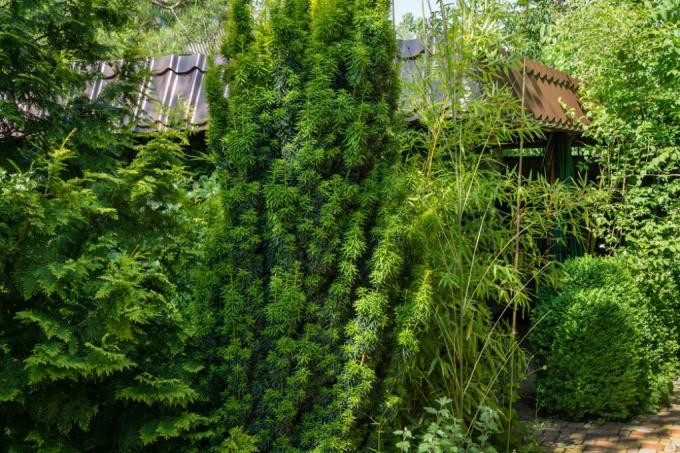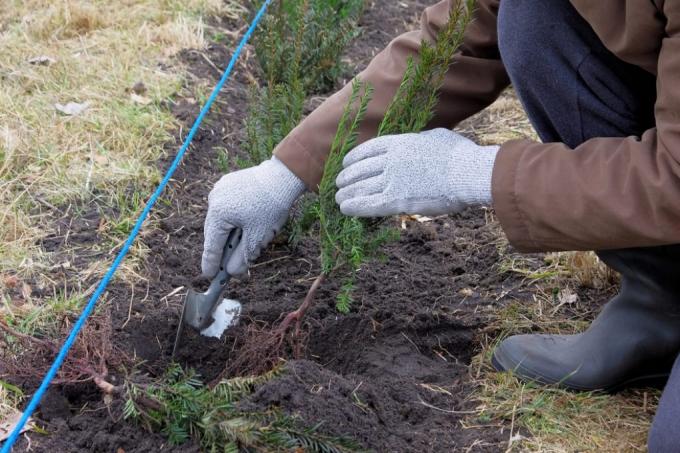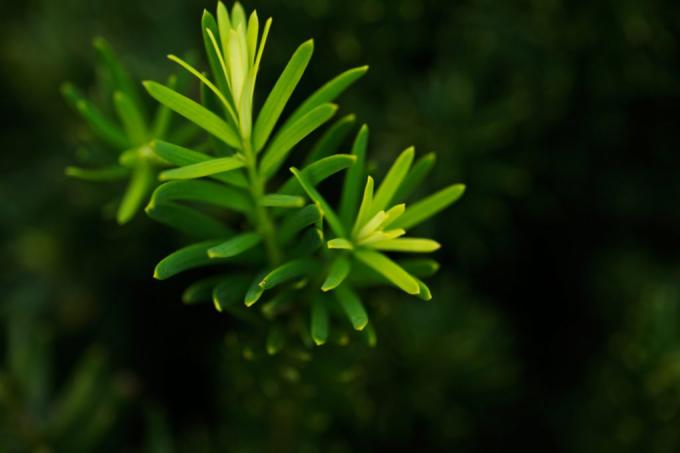AT A GLANCE
Which yew varieties are suitable for the garden?
Popular yew varieties for the garden are Taxus baccata (European yew), Taxus media 'Hicksii' and 'Hillii' (for hedges), 'Fastigiata' variants (columnar), 'Repandens' (ground cover) as well as 'David' and 'Renkes Kleiner Grüner' (dwarf Sorts).
What types of yew are there?
There are around ten different types of yew worldwide, of which only the European yew (Taxus baccata) is native to Europe. This in turn can be cultivated in its wild form, but also as a cultivar with specially bred characteristics. In the wild, however, Taxus baccata is threatened with extinction.
also read
The second type of yew that is often planted in gardens is the hybrid form Taxus media, which arose around 1900 from Taxus baccata and Taxus cuspidata, the Japanese yew. It is also known as a beaker and is characterized by its broad, columnar growth.
Which yew tree is best suited as a hedge?
For hedges you can mainly use the two varieties of Taxus media:
- 'Hicksii': narrow, upright growth; to 500 centimeters high and 400 centimeters wide, female species
- 'Hillii': slender, conical habit, up to 500 centimeters high and 300 centimeters wide, male variety without berries
But also the wild form of the European Yew as well as some of their varieties are very suitable for hedges:
- Taxus baccata: bushy, upright and well-branched habit, can grow up to 10 meters high and 8 meters wide
What all yews have in common is that they grow both in the sun and in the shade, and very cut compatible are.
What kind of yew tree grows columnar?
In addition to the rather broad varieties of yew, there are also some columnar varieties that can be planted very well as solitaires or in groups. These are without exception varieties of Taxus baccata:
- 'Fastigiata': columnar, very dense growth; up to 7 meters high and 2 meters wide; with dark green needles
- 'Fastigiata Robusta': very upright, narrow, densely branched; up to 5 meters high and 1.5 meters wide; deep dark green needles, hardier than 'Fastigiata'
- 'Fastigiata Aureomarginata': narrow columnar, up to 5 meters high and 2.5 meters wide; light green to golden yellow needles
Is there a low, ground-covering yew variety?
The 'Repandens' variety, also known as cushion yew or table yew, is ideal as a groundcover. This is also a variety of Taxus baccata.
'Repandens' scores with these properties:
- flat, spreading growth
- Growth height up to 60 centimeters
- Growth width up to 180 centimeters
- shiny, dark green needles
- evergreen
- robust and very tolerant of shade
- insensitive to root pressure
Like all yew varieties, 'Repandens' tolerates pruning well, but must be protected against late frosts in spring. You should only plan one plant per square meter of space.
Which yew trees grow dwarfed and stay low?
If the yew in the garden should not be too tall and wide - for example because you want to put it in the front yard or the garden is very small - then these varieties are recommended:
- 'David': maximum 150 centimeters high and 100 centimeters wide; narrow, columnar growth; golden needles
- 'Renkes Kleiner Grüner': maximum 80 centimeters high and 70 centimeters wide; broad bushy habit, dark green needles, good alternative to boxwood
These varieties are also varieties of Taxus baccata.
Tip
Yellow needles on yew
Some varieties of yew have beautiful, golden-yellow needles and are therefore an attractive eye-catcher in the garden. If, on the other hand, the needles of actually dark green varieties suddenly turn yellow, this often indicates that the soil is too dry.











